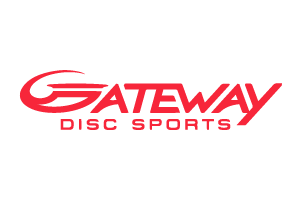I used to loathe the idea of artificial OB. (AOB) made fun of rope for years.
I despised the idea of USDGC and felt they didn’t spend the time to design the course.
My mind started to change when designing Carrollton ( in stl) where we installed a course in an old neighborhood bought out by airport development. This was about the same time that Discgolf started becoming popular to be videoed and viewed online.
There’s basically a concrete road on one side or the other on every single hole with a wood line on the other side of each fairway.
This course is fairly hard but can be made much harder with a little more distance as the roads are the entire length of each hole. The beauty of Carrollton is you literally can have 2000 people line the fairway on one side on every single hole.
From the beginning the park department’s plan was to remove all the concrete from these roads but once the course went in I helped convince them that the roads were integral part of the integrity of the course.
When designing a championship disc golf course that is intended for spectators it’s become necessary for holes to be open enough for viewing from the side.
Holes in the woods typically won’t need AOB, but too often these holes can only be viewed from directly behind the throwers or behind the landing areas or baskets.
The need for championship caliber holes to be both challenging and viewable brought about the change in my course design philosophy Especially at Eagles Crossing. This was the first Disc Golf Course that I was allowed to do two things one put the T pads exactly where I needed them to go to create the most difficulty where walls were built to raise them up to grade and secondly designed with the intentions for viewership and not just a couple dozen people we needed to find a way to get 4000 people on the course without affecting play. That forced me into designing holes that were more open around the peripheral of the wood lines and of course around the lakes.
Players these days have gotten so good, that without AOB your championship course will get shredded to pieces or it has to be so tight in the woods the viewing is poor.
Courses like North Woods, Brewster Ridge and Harmony Bends are phenomenal and a great challenge. I like wooded courses and these courses have no AOB, but the downside is no more than two dozen people can enjoy viewing in person.
When it comes to viewing sports there’s nothing like being there in person for a horse race, pro football and golf/Disc Golf. That feeling that comes up over you when sharing the experience of a live sporting event, if you’ve ever seen a PGA golf event where Tiger Woods was making a run for the victory you’re missing out on one of the great sporting experiences.
It cannot be replaced by viewing in your living room. All three of these sports and others are certainly better from the view at home on the screen but not the same shared experience as live in person.
AOB has become the standard for the DGPT courses and this trend will ( and should) continue in order to satisfy the need for spectating. Spectating is also needed as a revenue stream for the events.
AOB is certainly here to stay in order for disc golf courses to even be considered for the tour as it’s really the only way to get the difficulty up and provide what’s needed for viewership for both in person and on video.
The thing is you can’t just throw down rope , flags and stakes without a well thought out plan. Not all courses and course drainers are created equal.
I’m bummed I missed the convention but hopefully it takes place again.
Photo by Nick Reel

David McCormack
Owner, Gateway Disc Sports
From the Desk of Dave Mack


